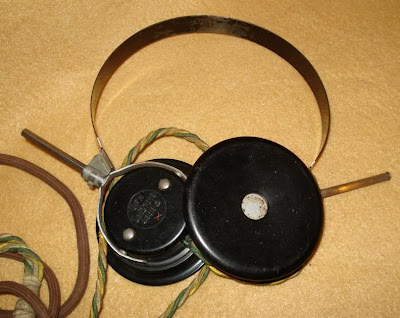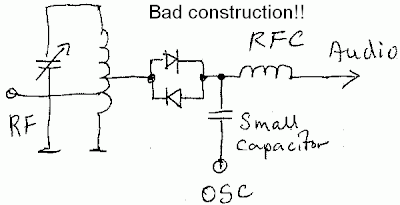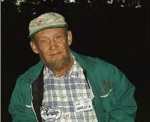Stewart, G3YSX, sent us an article that he wrote some time ago for the Crawley ARC. Thanks Stewart. (This is an abridged version of the article. ) Very interesting:
Sonya
Sonya is the code name of Ruth Werner ne Kuczynski 1907 - 2000. Sonja is of interest here because her role in the GRU was as a clandestine radio operator. In her autobiography “Sonya’s Report” she gives a little insight into her work.
Trained in Moscow in the early 1930’s Soviet radio operators had to learn to build their own transmitters on site, using available materials. In rural China she and her accomplice (whom she lived with as husband and wife) set about building their first transmitter using receiver parts. There is an interesting story of how she had her real husband ship the transformer (a heavy 8 inch cube) up from Shanghai in the seat of a chair. Under the stresses of travel this nearly split from the chair which might have terminated her career as a clandestine radio operator before it started. This was the first of many incidents in which only luck prevented discovery of her activities.
Their first transmitter was a “three point” Hartley set, much improved by studying an amateur radio handbook of the time. It is not clear whether this was an oscillator, buffer, PA, whether she meant a Hartley transmitter that used three valves in parallel, perhaps that it was a single stage transmitter, with a two stage receiver in the classic paraset fashion. On the other hand it is known that she had a domestic set and it was not uncommon of them to be shortwave capable at that time. Building and setting up the transmitter must have been something of a challenge because she would not have had access to test equipment. In particular she implies that the transmitter was VFO controlled (presumably crystals were fragile and a security risk, both when making a boarded crossing and being on a fixed frequency). Under these circumstances getting setting set up on frequency must have been really difficult. I would imagine that this must have required her to find a reference frequency sent by control, net her transmitter and then send. Not easy with a power oscillator design and a receive that would be pulled by such a strong signal. The set had to be hidden when not in use. The Morse key was improvised out of a Chinese paperweight (actually a type of steel ruler) and a bolt and was dismantled during the day.
Antennas were not so much a problem because large outside receiving antennas were common. Ruth talks about asking permission from her landlord in Oxford to put up her antenna and receiving help from her unsuspecting host. From here text it seems that antennas were mostly long wires, although she talks about a “Fuch’s” antenna, a type that I am not familiar with.
In one house (in Warsaw I think) she started transmitting and this immediately blew the fuse for the house. She then had to quickly dismantle and hide the apparatus in the dark, lest her rented room be searched looking for the cause of the fault. In another apartment in Switzerland she had to close down and move sites (suddenly move house) because of EMC problems. Luckily (for her) one of her neighbours commented to Ruth that her husband (a Nazi) was sure that someone was operating a transmitter nearby which was causing interference to their radio receiver, and that he would organize a search later that week when he returned from a trip.
Ruth notes in passing that the absence of amateur radio traffic during the war was a problem because Soviet operators used to use it as a cover for their clandestine activities. It is not clear whether she was operating in the amateur bands giving the authorities too many Morse signals to monitor (unlikely because the non-amateur nature of the traffic would have been observed and reported by the radio amateurs), whether she was posing as a radio ham (again unlikely because of the tight regulation) or more likely, in my view, using our activities as a cover for both EMC problems and - to the unskilled – for strong local morse received on the shortwave bands.
In 1937 whilst operating out of Warsaw, Ruth talks of one evening when after setting up the transmitter, she caught here hand across the HT (two 120v batteries in series). She could not remove her hand without the help of an accomplice, by which time it was painfully burnt. She then got a hard time from her controller for failing to get a 50 group message out that night through extreme QRN. It later out that there had been a major solar even that night which had disrupted all radio communications. However she appears to have been working for the sort of organization that trucked no excuse, not even acts of
God.
Ruth would typically transmit at night between two and four times a week. Messages were 60 to 500 groups. Assuming 20 WPM with perhaps 30% time allocated to repeats and other procedure transmissions would have taken at least 45 minutes. In practice however, due to the difficulty of copying, transmissions often took half the night. It is therefore very surprising that she was never caught. In particular, given the hard time that the GPO gave the amateur radio community during the late 1940’s when she was handling the Fuch’s traffic, it would be very interesting to know why they never found her station in rural Oxford.
Ruth’s autobiography, which is out of print, but available from East Sussex libraries, unfortunately lacks much of the detail that one would have expected from a western text written so long after the event. This is undoubtedly a result of the excessive secrecy intrinsic to the other side of the Iron curtain even so long after the events, and which was maintained despite the obvious duplicity of her employers. This is a pity, because it would have interesting but harmless after all these years to have read more technical detail about both the transmitters and the operating procedure used by these agents.
Stewart G3YSX




























